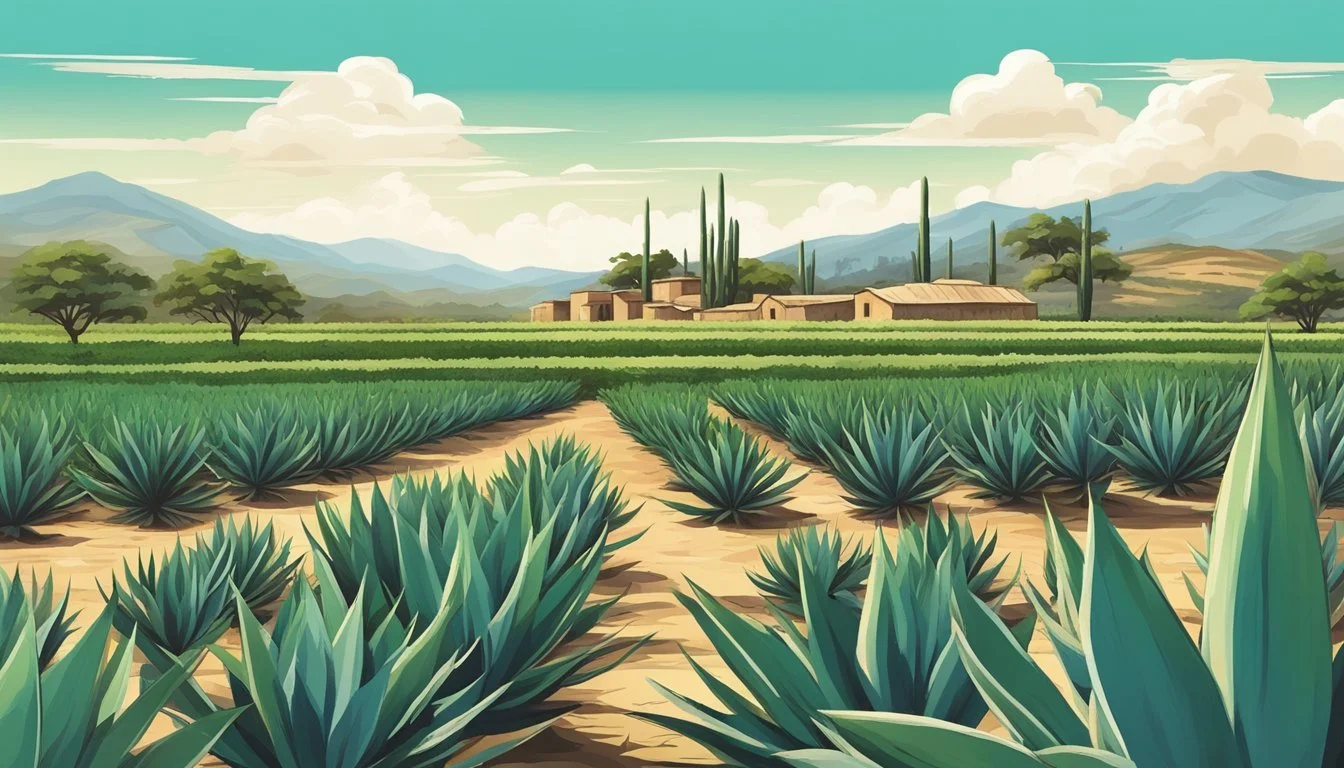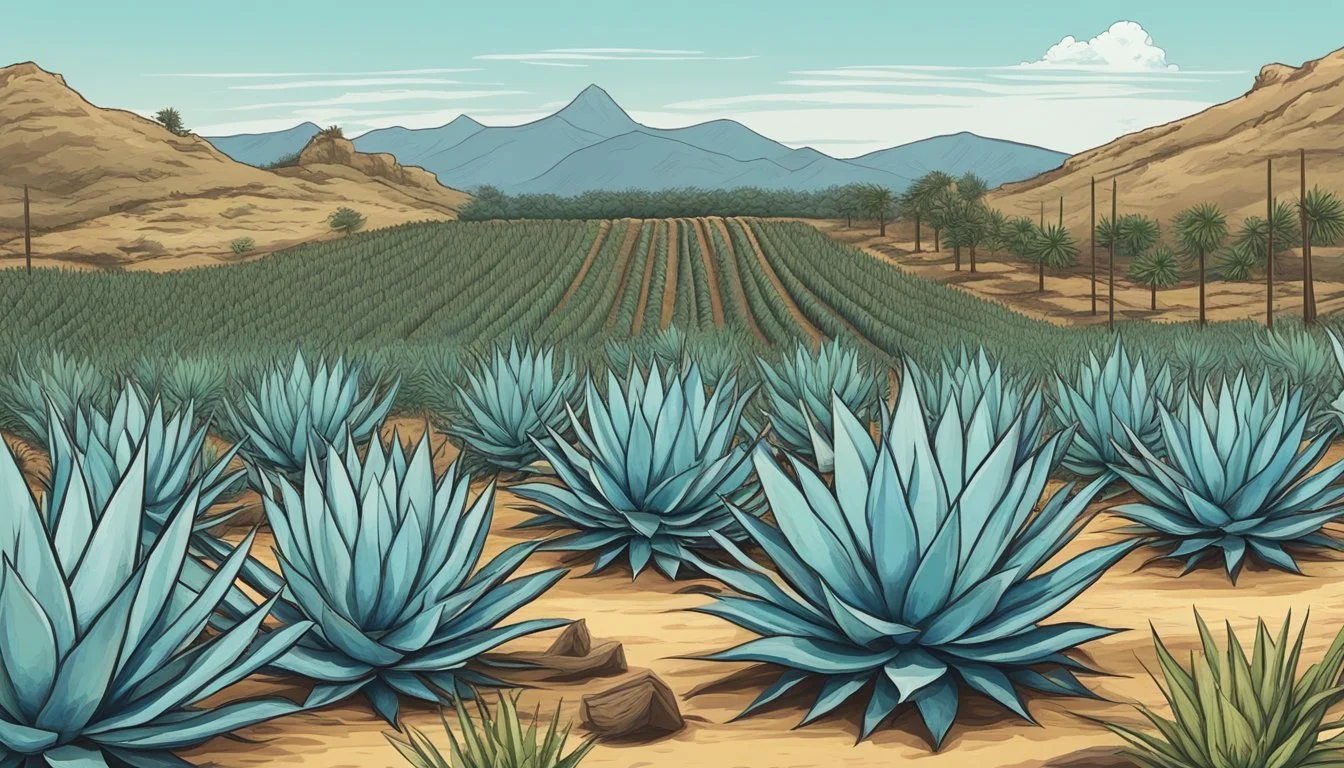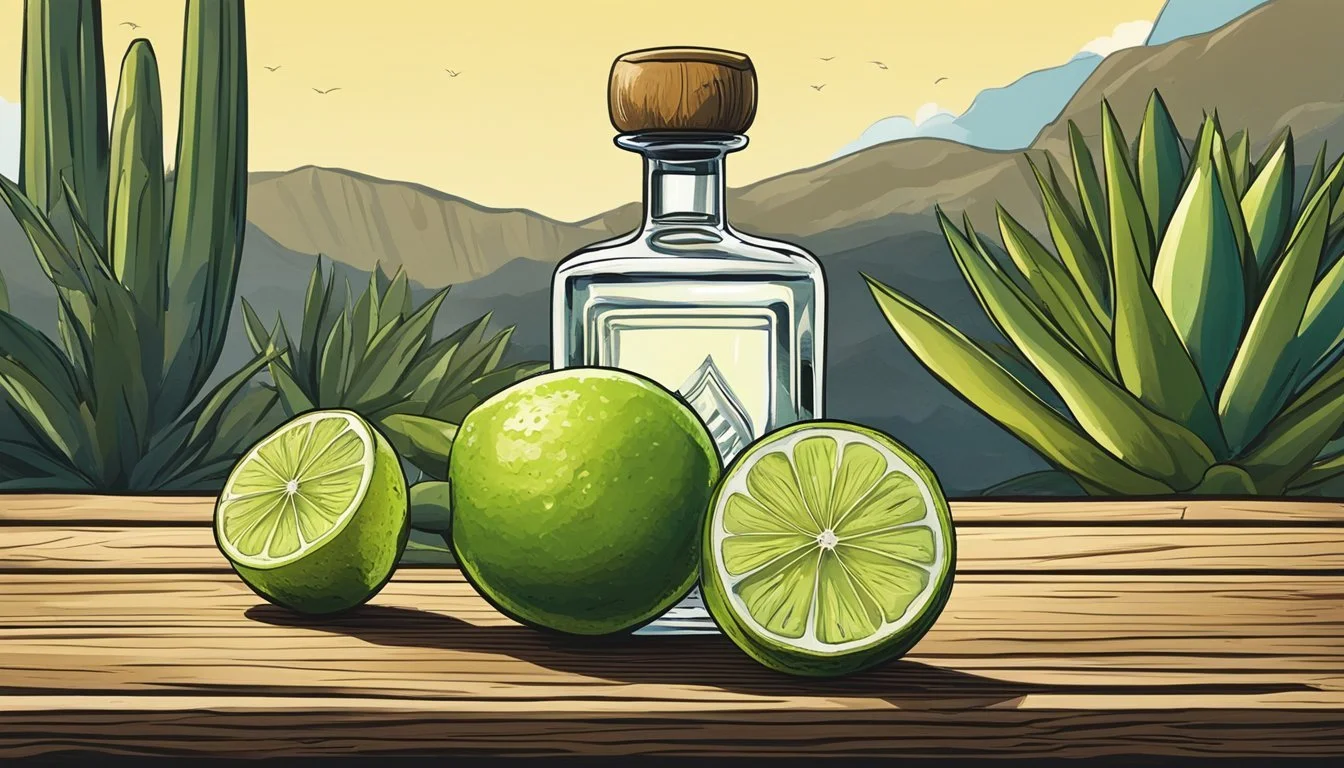The Tequila Worm
Separating Fact from Fiction Amidst Mexican Customs
The tequila worm is an emblematic element often associated with Mexican spirits, yet it is surrounded by a cornucopia of myths and misunderstanding. While the presence of a worm in the bottom of a liquor bottle is commonly linked to tequila, the practice is not rooted in traditional Mexican culture. Instead, it originates from a marketing strategy in the mid-20th century. The worm in question is actually a larval form of a moth that lives on the agave plant, which is the primary ingredient in both tequila and its close relative, mezcal.
In addressing the tradition of the tequila worm, it's important to differentiate between tequila and mezcal. The two spirits share similarities, but only mezcal is traditionally bottled with the worm. The addition of the worm, or "gusano," has been adopted over time as a sign of authenticity and quality by some mezcal producers, despite it being a relatively recent innovation in the long history of Mexican spirit production. The worm's role in mezcal has indeed become a cultural symbol, evoking a sense of heritage and crafting an image of the exotic that appeals to consumers on an international scale.
Tequila, a spirit deeply rooted in Mexican culture, carries its own set of traditions and standards for production. It is often held to strict regulations, specifically pertaining to the regions in which it can be produced and the types of agave plants used. Recognizing these distinctions is crucial in debunking the common myths surrounding the tequila worm. By separating fact from fiction, enthusiasts and newcomers alike can fully appreciate the traditional craftsmanship and cultural significance of these Mexican spirits.
The Origin and History of Tequila
Tequila, an emblematic spirit of Mexico, has a rich history rooted in the tradition of agave cultivation and distillation, closely tied to the region of Jalisco.
Agave: The Heart of Tequila
The cornerstone of tequila is the agave plant, specifically the blue agave, or Agave tequilana. This succulent plant is indigenous to Mexico and has been used for centuries by native peoples for various purposes, including the production of alcoholic beverages. It was not until the 16th century that the process resembling what we know as tequila production today began to take form.
Tequila Production and Distillation
Tequila production underwent significant refinement over the centuries. The distillation process involves harvesting mature agave plants, cooking the piñas (hearts of the agave) to convert starches into sugars, fermenting the sugars into alcohol, and then distilling the concoction to increase its purity and alcohol content. Official tequila production started in the late 18th century, with the granting of the first tequila-producing license to José Antonio de Cuervo.
Blue Agave and Its Unique Geographical Ties to Jalisco
The unique terroir of Jalisco's volcanic soil and climate is ideal for growing the blue agave plant. Consequently, tequila can only be named as such if it is produced within specific regions of Mexico—primarily within the state of Jalisco and limited regions in other states. The Denomination of Origin for tequila, established to protect the authentic production and heritage of the spirit, fortifies its deep connection to the region.
Understanding Mezcal and Its Relationship with Tequila
Mezcal encompasses a range of spirits distilled from the agave plant, of which tequila is a specific and regulated subset. To appreciate the connection between mezcal and tequila, one must grasp the diversity within the mezcal category and the distinct characteristics that set tequila apart.
The Broad Spectrum of Mezcal Varieties
Mezcal is traditionally produced from over 30 types of agave plants, which are native to Mexico. These plants can vary greatly in flavor, leading to a wide spectrum of mezcal profiles. The alcohol content in mezcal typically ranges between 35% and 55% alcohol by volume (ABV), allowing for a breadth of strength in the spirit's offerings. Production methods can also influence mezcal's taste, with some artisanal producers using ancient techniques that lend a distinctive smokiness.
Differences Between Tequila and Mezcal
Tequila and mezcal differ fundamentally in their production and regulation. Here is a summary of their key differences:
Agave Variety: Tequila is made exclusively from the blue agave plant, while mezcal can be produced from over 30 varieties, including espadín, tobaziche, and tepeztate.
Location: Tequila production is confined to specific Mexican states, primarily Jalisco. Mezcal production, though associated with Oaxaca, occurs in several regions across Mexico.
Processing: Tequila is typically steamed in industrial ovens before distillation, whereas mezcal is often roasted in pit ovens, imparting its characteristic smoky flavor.
Regulations: Tequila must adhere to stringent regulations overseen by the Consejo Regulador del Tequila (CRT), including an ABV range of 35% to 40% for the domestic market. Mezcal regulation is less strict but is gaining more structure as its popularity rises internationally.
Considering these elements, one can better understand the rich tapestry that defines mezcal and how tequila fits into this broader canvas as one of Mexico's most celebrated agave-based spirits.
Debunking Common Myths Around Tequila
When it comes to tequila, a spirit rich in tradition and culture, it's not unusual to find lore intertwined with fact. Two prevailing myths often rise to the surface, potentially misleading enthusiasts about what signifies quality and authenticity.
The Myth of the Tequila Worm
Contrary to popular belief, a worm does not belong in a bottle of authentic tequila. This misconception likely stems from marketing strategies that link the presence of a worm, or gusano, with the quality or potency of the spirit. The truth is, the gusano is traditionally found in some bottles of mezcal, another agave-based liquor. It's important to note that true tequila is regulated and must adhere to strict standards set by the Mexican government; none of these standards include a worm.
Myth: Tequila bottles containing a worm are traditional and of higher quality.
Fact: Authentic tequila does not come with a worm; it is a marketing gimmick without any basis in quality or tradition.
Quality Indicators Beyond the Gimmicks
Moving past gimmicks like the mythical tequila worm, true quality indicators of tequila are grounded in its production process and classification. Quality tequila is made from 100% blue agave, and its label will confirm this. Additionally, tequila is categorized into types—blanco, reposado, añejo, and extra añejo—based on aging time, impacting flavor and smoothness.
Here's a concise outline of what to look for:
Blanco (White or Silver): Unaged, offering a pure taste of agave.
Reposado (Rested): Aged between two months and a year; smoother than blanco.
Añejo (Aged): Aged for one to three years, known for a richer and more complex flavor.
Extra Añejo (Extra Aged): Aged for over three years, presenting the deepest complexity.
Neither the color nor the presence of a worm are reliable quality indicators. Gold tequila, often believed to be premium due to its color, is not necessarily aged; its hue may come from the addition of coloring agents. This is why understanding the categories and aging process of tequila is essential in recognizing an authentic and high-quality spirit.
The Gusano de Maguey: Tradition or Marketing Strategy?
The gusano de maguey, often found at the bottom of a mezcal bottle, is a topic of much debate—whether it is rooted in tradition or originated as a shrewd marketing strategy is discussed herein.
The Role of the Worm in Mezcal Culture
The presence of gusanos de maguey, or agave worms, in mezcal bottles is not an age-old tradition. These larvae come from moths that inhabit the agave plant. Historically, the worm was introduced into mezcal—tequila's smokier cousin—around the mid-20th century. Originally, the worm served as evidence of high-proof alcohol, implying that the alcohol level was sufficient to preserve the worm intact.
Marketing Tactics and Brand Identity
The inclusion of the gusano de maguey within mezcal took on new significance due to the innovative thoughts of certain entrepreneurs in the 1940s or 1950s. The worm became a unique selling point to differentiate mezcal in a bustling spirits market, especially aiming to capture the curiosity of foreign consumers, most notably Americans. The act of consuming mezcal with the worm was promoted as an experience, branding the drink as exotic and authentic, and thereby associating the worm with the brand identity of mezcal within international markets.
Flavors and Profiles: From Agave to Bottle
The journey of tequila from the agave fields to the final bottled spirit is complex and shapes the distinctive flavors and profiles that aficionados cherish.
The Fermentation Process and Its Impact on Flavor
Tequila's flavor is significantly influenced by the fermentation process, which converts the sugars from the agave plant into alcohol. An array of factors affect the flavor during this stage, including:
Yeast strains: Different strains can impart subtle flavor variances.
Fermentation period: The duration can range from a few days to several weeks, impacting the tequila's flavor complexity.
Temperature: It plays a crucial role in determining the rate of fermentation and the flavor of the final product.
These elements combined contribute to the creation of a tequila that might range from sweet and floral to earthy and robust.
Understanding Tequila's Flavor Profile
Tequila boasts a diverse flavor profile, which can be categorized into two primary types depending on the aging process:
Blanco (unaged): Reflects the purest taste of the blue agave, often described as sweet, with fresh, earthy notes.
Aged (Reposado, Añejo, Extra Añejo): Develops nuanced flavors over time, acquiring characteristics from the wood barrels that can include caramel, vanilla, and spices.
Across both types, tequila is renowned for its earthy undercurrents, derived from the agave itself. The flavor profile is a complex tapestry that mirrors its Mexican heritage, embodying both the raw earthiness of the agave plant and the refined sweetness that results from its careful fermentation and distillation.
Insects in Mexican Cuisine and Tequila
In Mexico, the incorporation of insects and larvae into the culinary tradition extends to alcoholic beverages, such as tequila and mezcal. These practices showcase both historical and gastronomical importance.
Consumption of Larvae and Insects as Traditional Delicacy
Mexican edible insects and larvae have a significant role as a source of protein and have been part of the traditional diet in various regions. Gusanos de maguey, the larvae that inhabit agave plants, are not actual worms but moth larvae. They are traditionally harvested from the agave leaves and roots, where they naturally occur.
Chinicuiles (red gusanos): These are reddish moth larvae often consumed in dishes for their distinctive flavor.
Maguey worms (white gusanos): Whitish in color with brown tips, these larvae are used in various culinary preparations.
These larvae are cherished for their unique taste and are considered a delicacy, reflecting a respect for the natural lifecycle of the agave plant.
Worm Salt and Its Culinary Uses
Worm salt, known as sal de gusano, is a seasoned salt blend that incorporates ground gusanos de maguey. It is a staple condiment in Mexican cuisine and is often paired with traditional dishes and beverages.
Ingredients: Typically, worm salt consists of a mixture of ground moth larvae, chili peppers, and salt.
Usage: It is commonly served with slices of orange as a snack, used to rim glasses for cocktails, particularly those containing mezcal, and sprinkled on various foods for added flavor.
The utilization of insect-derived products in Mexican cuisine exemplifies a culinary tradition that both honors its history and caters to contemporary tastes.
Tequila in Popular Culture and Consumption
Tequila's storied past and vibrant present have firmly established it as a cultural mainstay, not only in Mexico but worldwide. It plays a significant role in cocktails and culinary arts, influenced by tradition and innovation alike.
Tequila's Place in Cocktails and Mixology
Tequila has become a cornerstone in the world of mixology, renowned for its versatility and capacity to blend seamlessly with a multitude of flavors. Margaritas, arguably the most iconic tequila-based cocktail, have seen countless variations from the classic lime and triple sec combination to inventive infusions with exotic fruits and spices. Mixologists constantly experiment with tequila, expanding its presence in commercial bottles across upscale bars and casual dining establishments.
Margarita: tequila, lime juice, Cointreau or triple sec
Tequila Sunrise: tequila, orange juice, grenadine
Paloma: tequila, grapefruit soda, lime juice.
Tequila's rich flavor profile enhances the potency and depth of cocktails, offering connoisseurs a spectrum of tastes from smooth sipping blanco to the robust and aged añejo varieties.
The Impact of Tequila on Modern Dishes and Flavors
The culinary world has embraced tequila, using it to enhance flavors in modern dishes. Chefs utilize tequila's unique taste to add a refined edge to savory and sweet creations. Tequila-infused dishes, such as tequila-lime chicken and tequila-flavored desserts, exhibit the spirit's flexibility beyond the glass.
Tequila-Infused Dishes:
Tequila-lime marinated meats
Tequila-flavored sauces and glazes
Desserts with a subtle hint of tequila essence.
Cultural appreciation of tequila within the culinary scene is evident in high-end dining experiences as well as in home cooking, making it a beloved ingredient in contemporary kitchens. Entrepreneurs in the mezcal industry have capitalized on this trend, often working closely with chefs to craft pairings that elevate the dining experience.
Health and Regulatory Aspects of Tequila Consumption
Tequila, a traditional Mexican spirit, has been surrounded by myths and misconceptions regarding its health effects and quality. This section will elucidate health-related myths and explain regulatory measures that ensure the quality of tequila.
Addressing Myths: Hallucinations and Tequila
The notion that tequila can cause hallucinations is a persistent myth. High-quality tequila contains no hallucinogenic properties; it is a distilled spirit made from the blue agave plant. Consuming it does not lead to hallucinogenic effects. The myth may stem from tequila's historical confusion with mezcal, which sometimes includes a "worm" in the bottle, erroneously believed to have psychoactive or aphrodisiac qualities. Scientific analysis shows that the worm, the larva of the Hypopta agavis moth, does not impart hallucinogenic properties or function as an aphrodisiac.
Quality Control and the Role of the Mexican Standards Authority
The Mexican Standards Authority, known as "Norma Oficial Mexicana" (NOM), is the regulatory body that oversees the quality and standards of tequila production. It enforces strict regulations governing the production, bottling, and labeling of tequila, ensuring that only spirits made from the blue agave plant in specific regions of Mexico can be labeled as tequila. The NOM certification on a bottle of tequila verifies its authenticity and adherence to quality standards. This contributes to the maintenance of tequila's global reputation as a premium alcoholic beverage.
Tequila marked with the NOM seal guarantees that the consumer is purchasing quality tequila, produced in compliance with Mexican standards. This ensures that the tequila adheres to the following:
Origin: Must be produced in designated areas within Mexico.
Agave Content: Must be made with a minimum of 51% blue agave for mixto tequila and 100% for pure agave tequila.
By dispelling myths and enforcing quality standards, consumers can appreciate tequila as a traditional Mexican spirit with a rich cultural heritage, while being assured of its quality and authenticity.
Tequila's Global Reach and the Future
The tequila industry has seen a substantial expansion globally, with future trends pointing towards innovation in production and a deeper commitment to sustainability.
Export and Influence of Tequila Worldwide
Mexico remains the heartland of tequila, controlling its strict appellation of origin. Tequila's global reach is undeniable, as it has become a significant export and a key player in international spirits markets.
Exports: In recent years, Mexican tequila has experienced a surge in exports, with the United States being the largest consumer outside Mexico.
Brand Identity: As it travels across borders, tequila carries with it a brand identity steeped in tradition, influencing cocktail cultures and spirits preferences worldwide.
Tradition & Mezcal Production: Alongside tequila, mezcal – its smoky counterpart – is gaining traction, further showcasing the richness of Mexican agave-based spirits.
Innovation and Sustainability in Tequila Production
Tequila producers are increasingly adopting innovative methods to enhance sustainability in cultivation and production lines, recognizing the importance of environmental stewardship.
Quality Indicator: Advanced farming techniques and state-of-the-art distilling processes are being utilized as indicators of quality and dedication to craftsmanship.
Sustainability: Active initiatives in reducing waste, water consumption, and implementing recycling measures in agave cultivation are transforming the industry.
Marketing Strategy: Tequila brands are aligning their marketing strategies with a global audience's demand for sustainable and authentically produced spirits.
The exploration of new marketing strategies, coupled with a focus on sustainability, are set to shape the future of tequila as it upholds its traditional roots while meeting modern demands.





